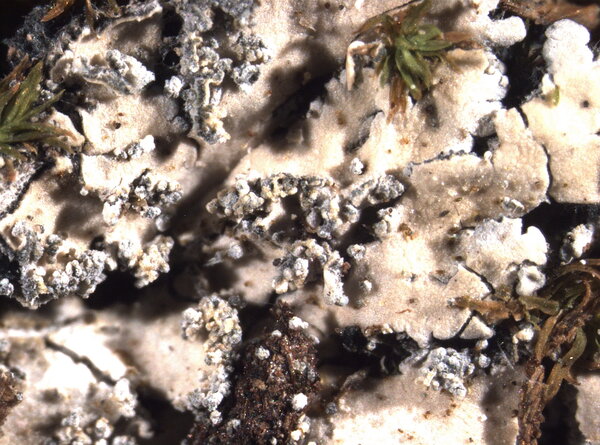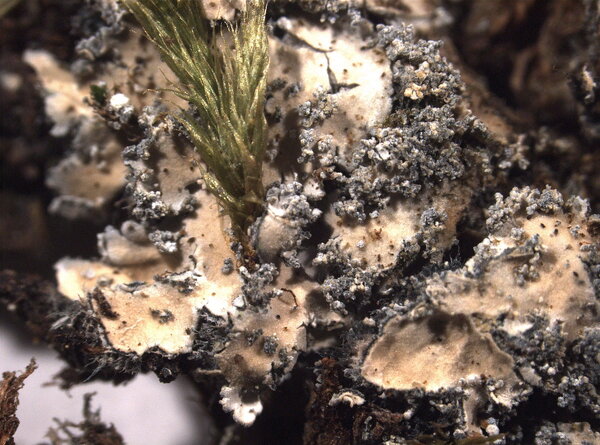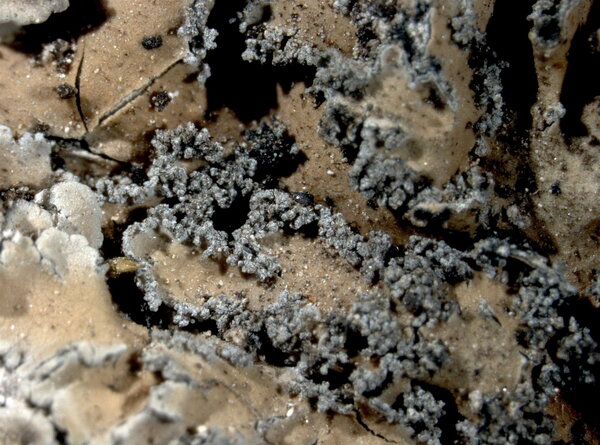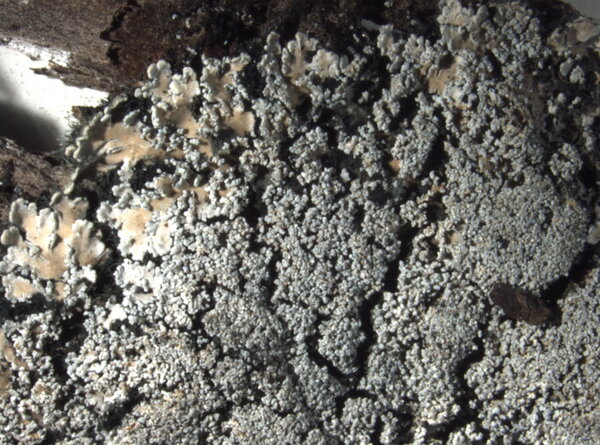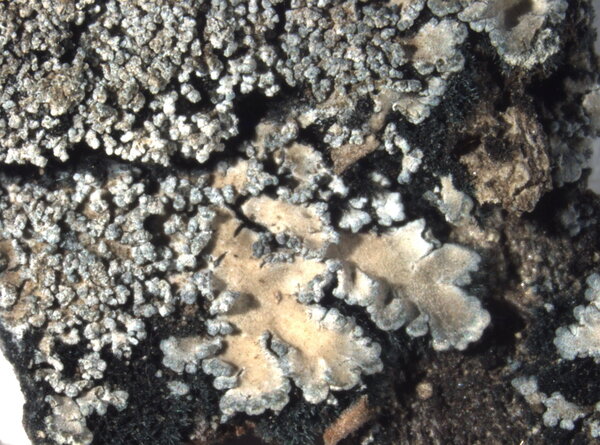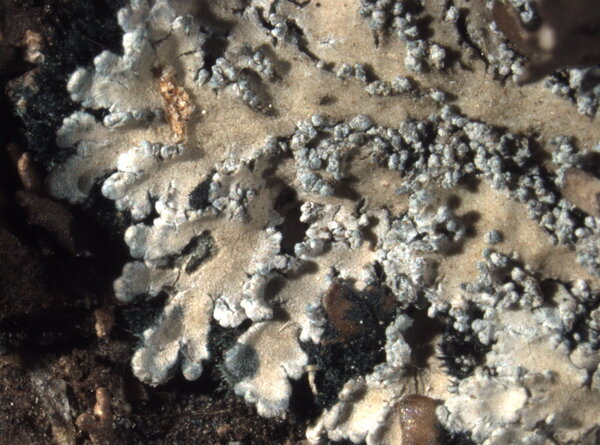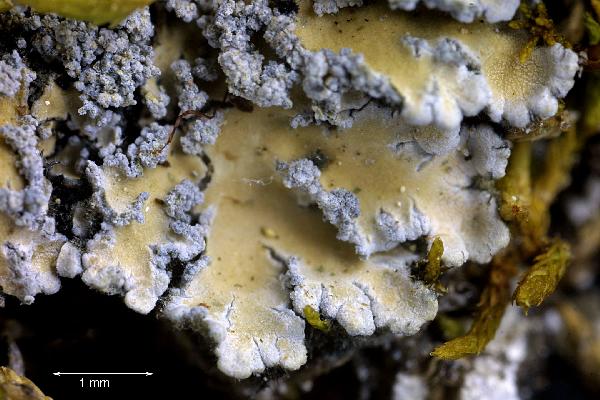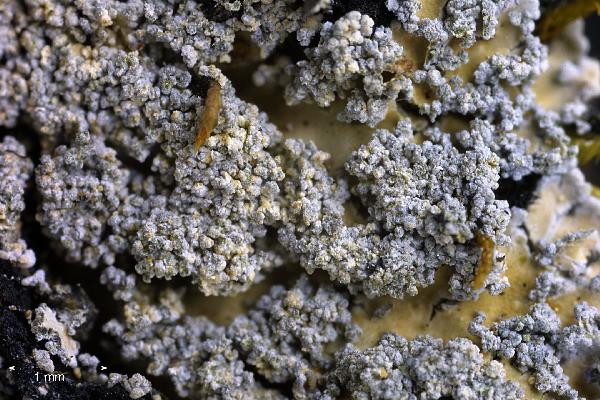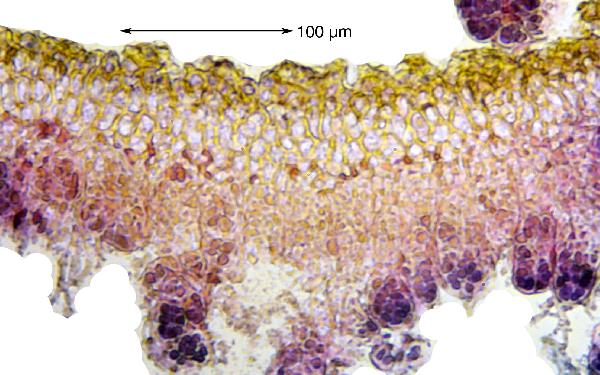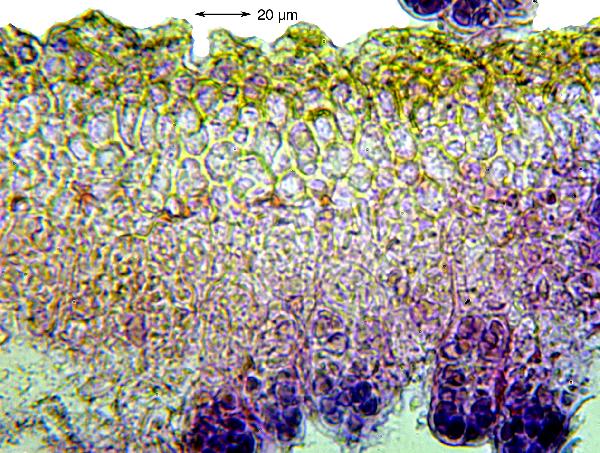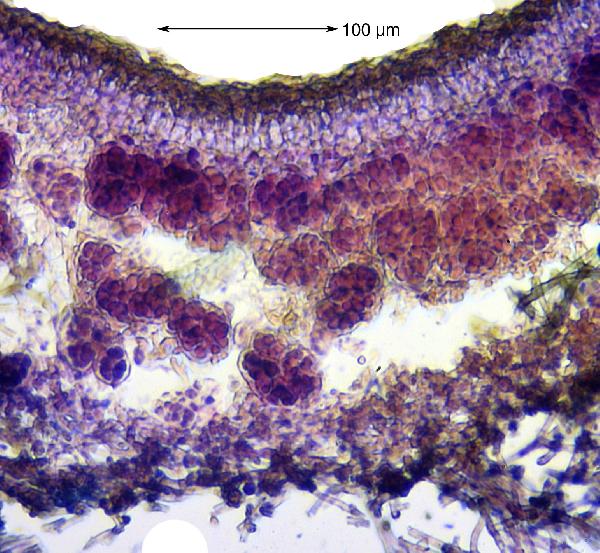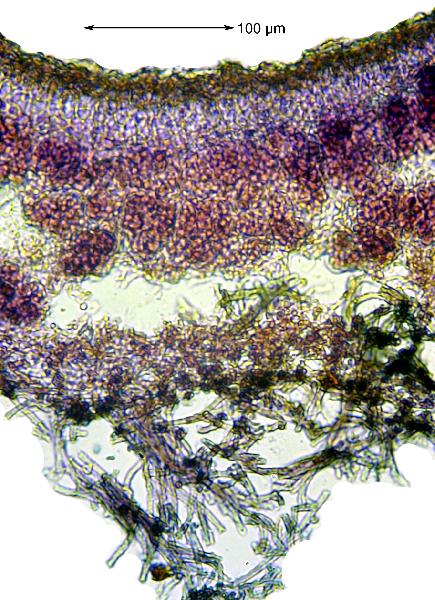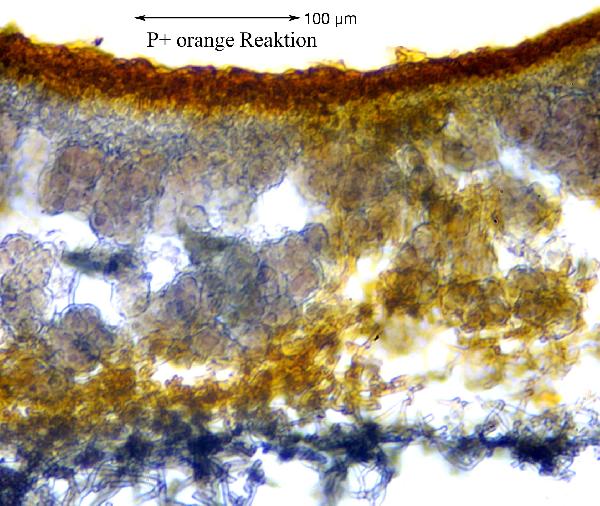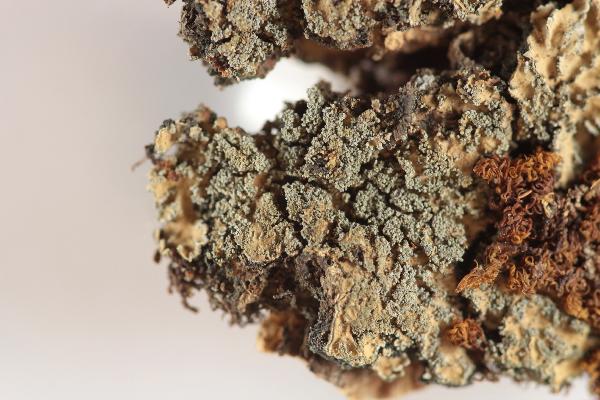Pannaria conoplea (Ach.) Bory
Dict. Class. Hist. Nat., 13: 20, 1828. Basionym: Parmelia conoplea Ach. - Lichenogr. Univ.: 467, 1810.
Synonyms: Pannaria coeruleobadia (Schleich.) A. Massal.; Pannaria lanuginosa auct.; Pannaria pityrea sensu Degel. non (DC.) Degel.; Pannaria rubiginosa var. conoplea (Ach.) Körb.; Pannaria rubiginosa var. lanuginosa auct. non (Hoffm.) Zahlbr.; Trachyderma coeruleobadium (Schleich.) Trevis.
Distribution: N - Frl (Tretiach & Carvalho 1995, Nascimbene & al. 1998), Ven (Caniglia & al. 1999, Nascimbene & al. 2007, 2009c, 2010b), TAA (Nascimbene 2005b, Nascimbene & al. 2007b, 2022, Nimis & al. 2015), Lomb (Dalle Vedove & al. 2004, Ravera & al. 2022), Piem (Isocrono & al. 2004, Morisi 2005), VA (Piervittori & Isocrono 1999), Emil (Tretiach & al. 2008, Fariselli & al. 2020), Lig (Brunialti & al. 1999, Watson 2014, Giordani & al. 2025). C - Tosc (Putortì & Loppi 1999b, Tretiach & al. 2008), Marc (Nimis & Tretiach 1999), Umb (Ravera 1998, Ravera & al. 2006), Laz (Genovesi & al. 2008, Ravera & Genovesi 2008), Abr (Nimis & Tretiach 1999), Mol (Ravera & Genovesi 2012, Brackel 2020), Sar. S - Camp (Garofalo & al. 2010, Catalano & al. 2016, Ravera & al. 2021c), Pugl, Bas (Potenza 2006, Potenza & Fascetti 2010, 2012, Brackel 2011, Ravera & al. 2021c), Cal (Puntillo 1996, Incerti & Nimis 2006), Si (Stofer 2006).
Description: Thallus small-foliose to rarely subcrustose, heteromerous, dorsiventral, 150-200 µm thick, forming irregular to regular, 2-3(-4) cm wide rosettes developing on a dark hypothallus. Lobes contiguous to partially overlapping, fan-shaped, 2-7(-9) mm long and (1-)3-4(-5) mm wide, deeply incised, adnate to more or less ascending, sometimes poorly developed. Upper surface glaucous grey to pale brown in sun-forms, shiny centrally, scabrid-pruinose towards margins, with soredia-like, decorticated marginal lobules (gymnidia) that sometimes totally cover the central parts of thallus; lower surface whitish, with blue-black rhizohyphae sometimes extending beyond lobe margins to form a kind of prothallus. Upper cortex paraplectenchymatous, 40-50 µm thick; medulla white; lower surface ecorticate. Apothecia very rare, lecanorine, 0.5-1.5 mm across, with a reddish brown disc and a gymnidiate thalline margin. Proper exciple subparaplectenchymatous; epithecium brown; hymenium colourless to pale brown, (100-)110-150 µm high, partially I+ persistently blue near the asci; paraphyses mostly simple, the apical cells hardly swollen; hypothecium colourless. Asci 8-spored, clavate to subcylindrical, with a well developed, non-amyloid or very weakly amyloid tholus lacking any internal structures, and an intensely amyloid, thin outer sheath. Ascospores 1-celled, hyaline, ellipsoid, pointed at both ends, with a ridged epispore, measuring 15-19 x 9-10 µm without epispore, 20-24 x 10-12 µm including the epispore. Photobiont cyanobacterial, (Nostoc, the cells not in chains). Spot tests: thallus K-, C-, KC-, P+ orange. Chemistry: pannarin.Note: a Lobarion-species, most common on mossy bark in open, humid forests, sometimes on mossy siliceous rocks; declining, especially in Northern Italy. It is included in the Italian red list of epiphytic lichens as “Near-threatened” (Nascimbene & al. 2013c).
Growth form: Foliose, narrow lobed
Substrata: bark
Photobiont: cyanobacteria, filamentous (e.g. Nostoc, Scytonema)
Reproductive strategy: mainly sexual
Most common in areas with a humid-warm climate (e.g. most of Tyrrenian Italy)
Commonnes-rarity: (info)
Alpine belt: absent
Subalpine belt: absent
Oromediterranean belt: absent
Montane belt: extremely rare
Submediterranean belt: absent
Padanian area: absent
Humid submediterranean belt: extremely rare
Humid mediterranean belt: extremely rare
Dry mediterranean belt: absent

Predictive model
Herbarium samples
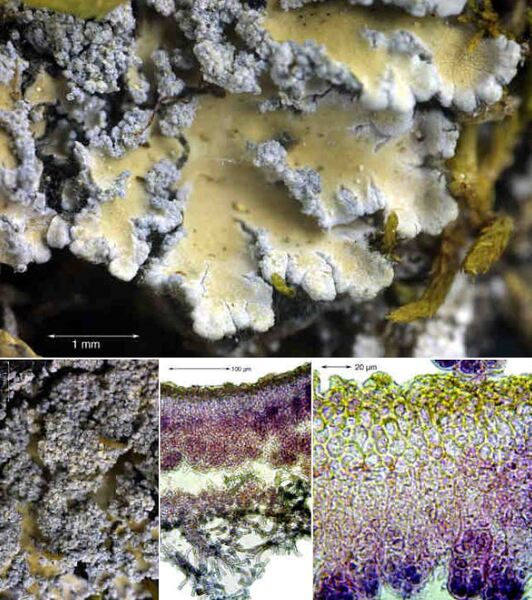

Felix Schumm – CC BY-SA 4.0
Image from: F. Schumm (2008) - Flechten Madeiras, der Kanaren und Azoren. Beck, OHG - ISBN: 978-3-00-023700-3


P.L. Nimis; Owner: Department of Life Sciences, University of Trieste
Herbarium: TSB (14361)
2001/12/10
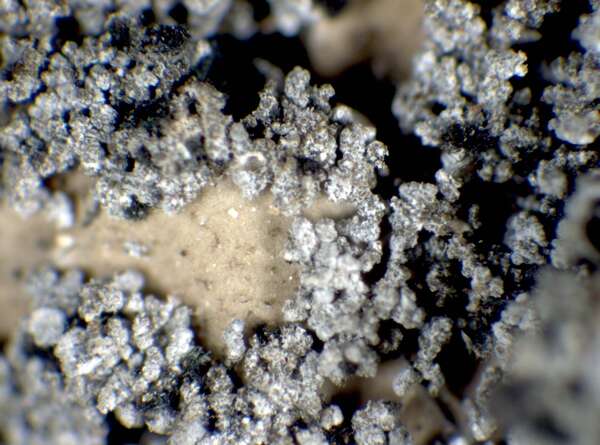

P.L. Nimis; Owner: Department of Life Sciences, University of Trieste
Herbarium: TSB (2542)
2001/11/28
detail of soredia
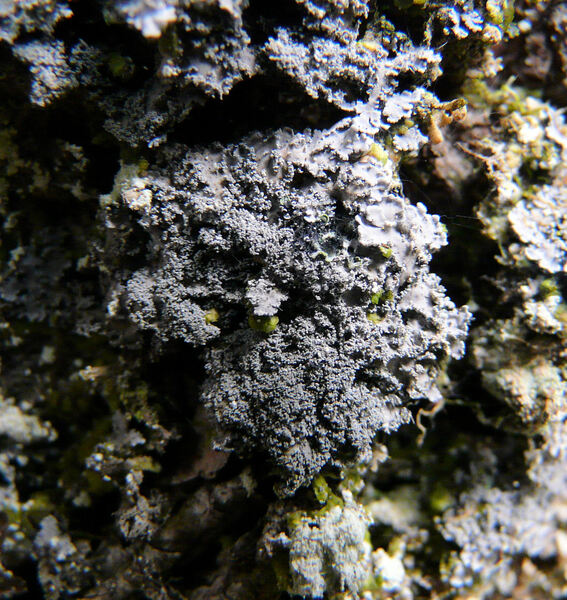

Andrea Moro; Owner: Department of Life Sciences, University of Trieste
Italia, Friuli-Venezia Giulia, UD, Comune di Sauris, Bosco della Stua presso il Lago
2008.26.08
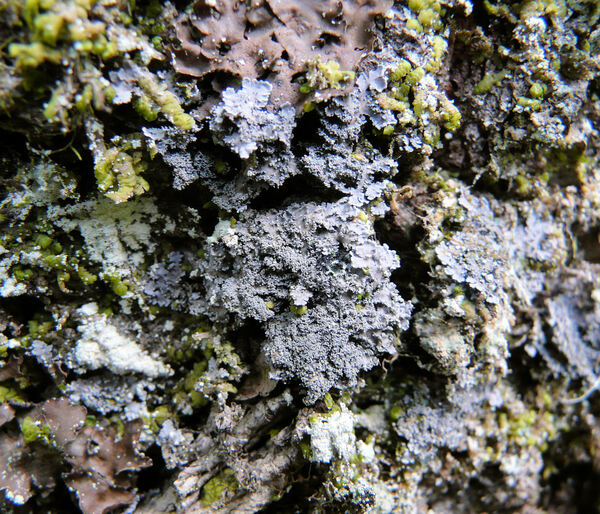

Andrea Moro; Owner: Department of Life Sciences, University of Trieste
Italia, Friuli-Venezia Giulia, UD, Comune di Sauris, Bosco della Stua presso il Lago
2008.26.08


Andrea Moro; Owner: Department of Life Sciences, University of Trieste
Italia, Friuli-Venezia Giulia, UD, Comune di Sauris, Bosco della Stua presso il Lago
2008.26.08

Bernard Bouffinier - Source: http://www.lichensmaritimes.org/index.php?task=fiche&lichen=367&lang=en
France, Trégarvan

Bernard Bouffinier - Source: http://www.lichensmaritimes.org/index.php?task=fiche&lichen=367&lang=en
France, Trégarvan

Bernard Bouffinier - Source: http://www.lichensmaritimes.org/index.php?task=fiche&lichen=367&lang=en
France, Forêt du Cranou
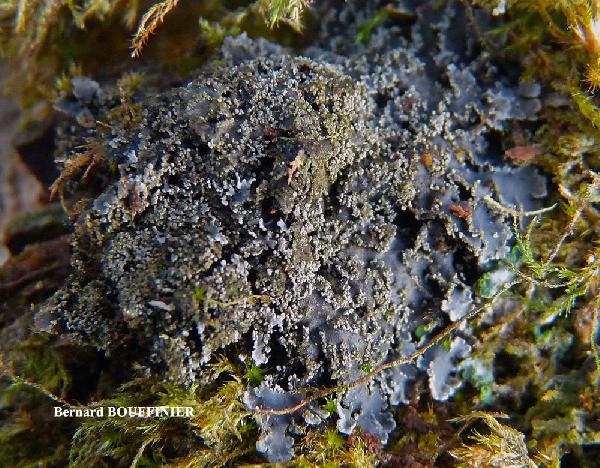
Bernard Bouffinier - Source: http://www.lichensmaritimes.org/index.php?task=fiche&lichen=367&lang=en
France, Forêt du Cranou
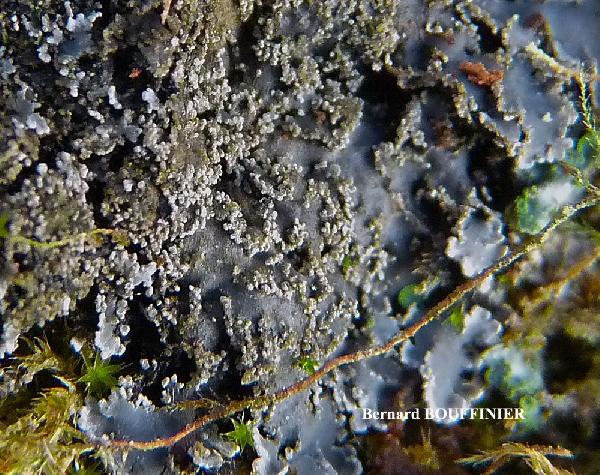
Bernard Bouffinier - Source: http://www.lichensmaritimes.org/index.php?task=fiche&lichen=367&lang=en
France, Forêt du Cranou
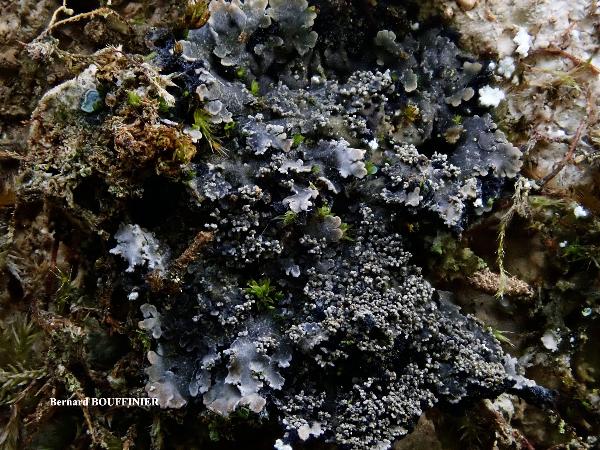
Bernard Bouffinier - Source: http://www.lichensmaritimes.org/index.php?task=fiche&lichen=367&lang=en
France, Dineault
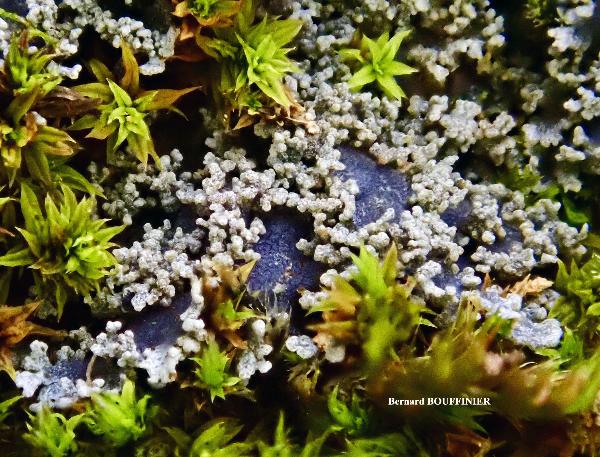
Bernard Bouffinier - Source: http://www.lichensmaritimes.org/index.php?task=fiche&lichen=367&lang=en
France, Dineault
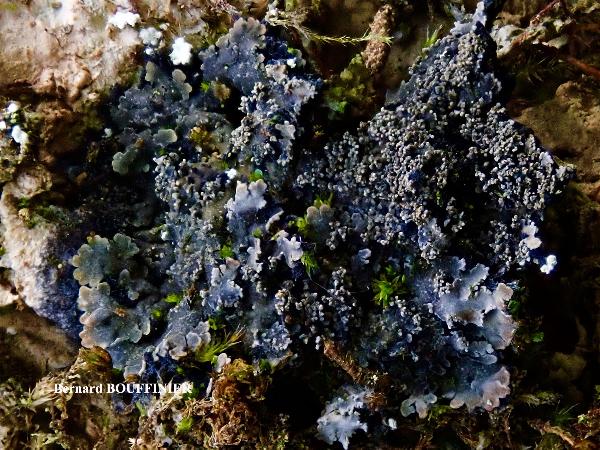
Bernard Bouffinier - Source: http://www.lichensmaritimes.org/index.php?task=fiche&lichen=367&lang=en
France, Dineault
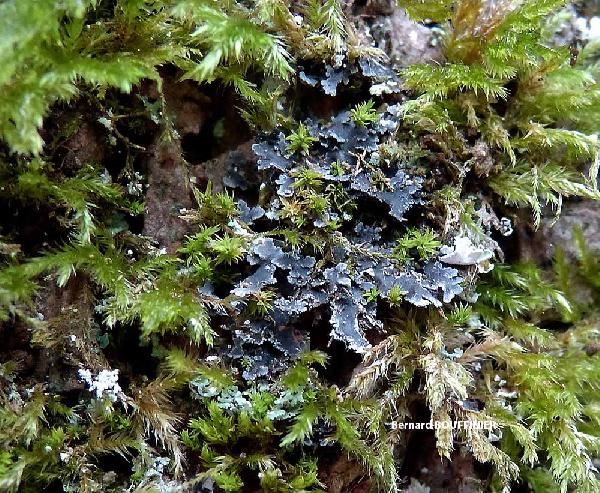
Bernard Bouffinier - Source: http://www.lichensmaritimes.org/index.php?task=fiche&lichen=367&lang=en
France, St. Herbot

Bernard Bouffinier - Source: http://www.lichensmaritimes.org/index.php?task=fiche&lichen=367&lang=en
France, St. Herbot
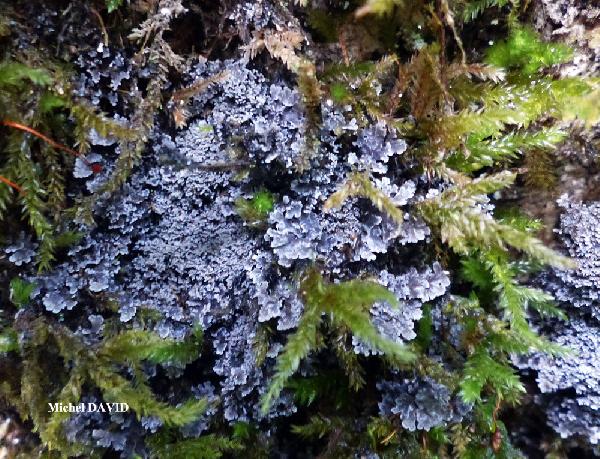
Michel David - Source: http://www.lichensmaritimes.org/index.php?task=fiche&lichen=367&lang=en
France, Forêt du Cranou
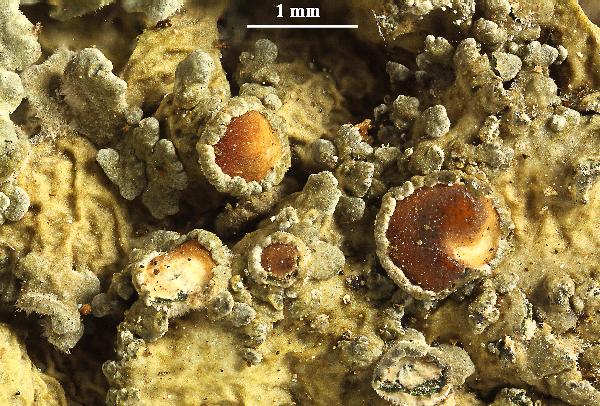

Felix Schumm - CC BY-SA 4.0
[19515], Far East of Russia, Zmeinyi creek valley, the Kunashir Island;
broad leaved forest; on bark of Ulmus laciniata Trantv.; 44°0'27.66'' N,
145°40'57.30'' E, 39 m. Leg. A. Ezhkin, 31.07.2013
(488/Ku62/P2/09.2016), det. A. Ezhkin.
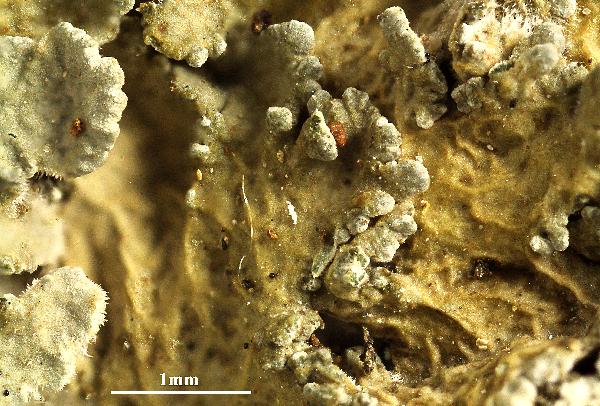

Felix Schumm - CC BY-SA 4.0
[19515], Far East of Russia, Zmeinyi creek valley, the Kunashir Island;
broad leaved forest; on bark of Ulmus laciniata Trantv.; 44°0'27.66'' N,
145°40'57.30'' E, 39 m. Leg. A. Ezhkin, 31.07.2013
(488/Ku62/P2/09.2016), det. A. Ezhkin.
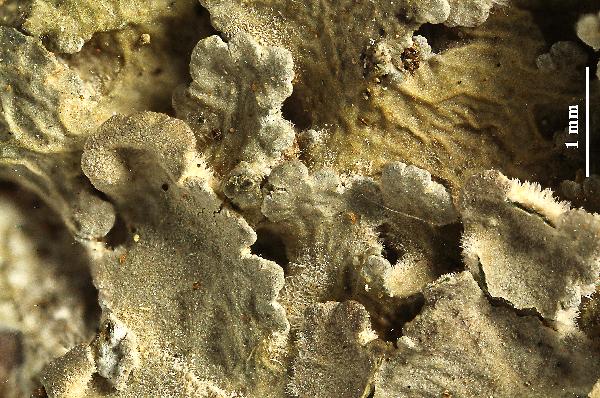

Felix Schumm - CC BY-SA 4.0
[19515], Far East of Russia, Zmeinyi creek valley, the Kunashir Island;
broad leaved forest; on bark of Ulmus laciniata Trantv.; 44°0'27.66'' N,
145°40'57.30'' E, 39 m. Leg. A. Ezhkin, 31.07.2013
(488/Ku62/P2/09.2016), det. A. Ezhkin.
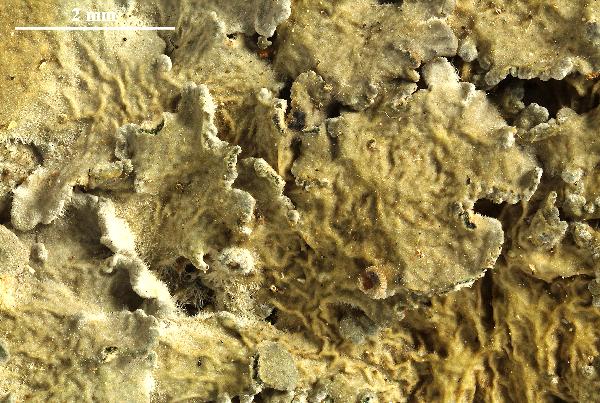

Felix Schumm - CC BY-SA 4.0
[19515], Far East of Russia, Zmeinyi creek valley, the Kunashir Island;
broad leaved forest; on bark of Ulmus laciniata Trantv.; 44°0'27.66'' N,
145°40'57.30'' E, 39 m. Leg. A. Ezhkin, 31.07.2013
(488/Ku62/P2/09.2016), det. A. Ezhkin.


Felix Schumm - CC BY-SA 4.0
[19515], Far East of Russia, Zmeinyi creek valley, the Kunashir Island;
broad leaved forest; on bark of Ulmus laciniata Trantv.; 44°0'27.66'' N,
145°40'57.30'' E, 39 m. Leg. A. Ezhkin, 31.07.2013
(488/Ku62/P2/09.2016), det. A. Ezhkin.
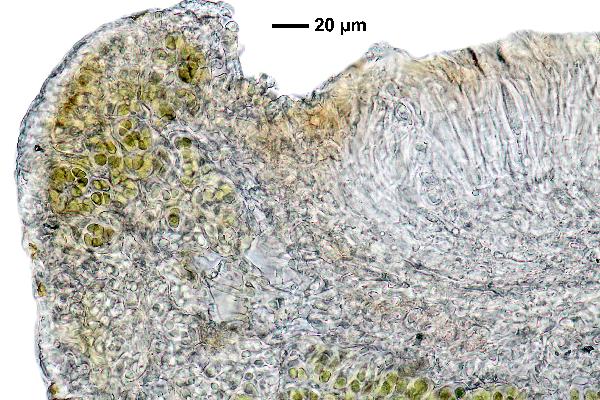

Felix Schumm - CC BY-SA 4.0
[19515], Far East of Russia, Zmeinyi creek valley, the Kunashir Island;
broad leaved forest; on bark of Ulmus laciniata Trantv.; 44°0'27.66'' N,
145°40'57.30'' E, 39 m. Leg. A. Ezhkin, 31.07.2013
(488/Ku62/P2/09.2016), det. A. Ezhkin.
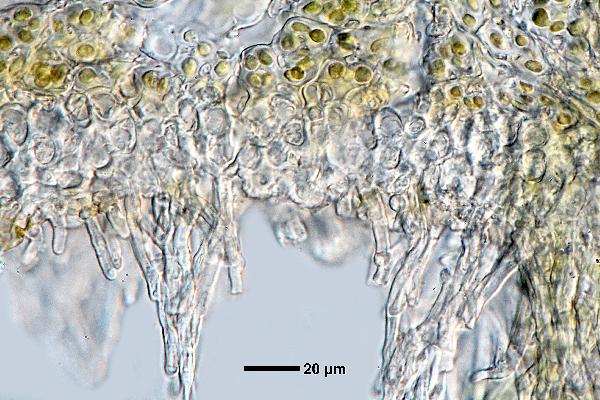

Felix Schumm - CC BY-SA 4.0
[19515], Far East of Russia, Zmeinyi creek valley, the Kunashir Island;
broad leaved forest; on bark of Ulmus laciniata Trantv.; 44°0'27.66'' N,
145°40'57.30'' E, 39 m. Leg. A. Ezhkin, 31.07.2013
(488/Ku62/P2/09.2016), det. A. Ezhkin.
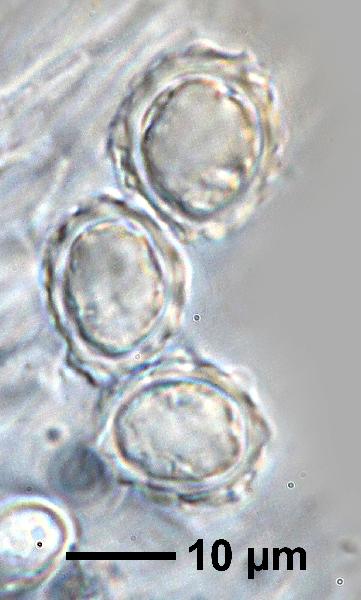

Felix Schumm - CC BY-SA 4.0
[19515], Far East of Russia, Zmeinyi creek valley, the Kunashir Island;
broad leaved forest; on bark of Ulmus laciniata Trantv.; 44°0'27.66'' N,
145°40'57.30'' E, 39 m. Leg. A. Ezhkin, 31.07.2013
(488/Ku62/P2/09.2016), det. A. Ezhkin.
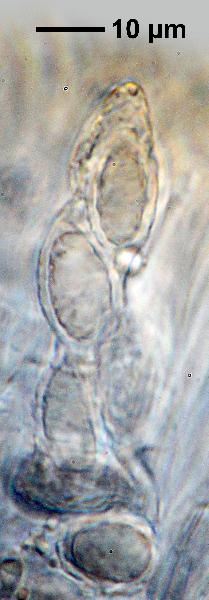

Felix Schumm - CC BY-SA 4.0
[19515], Far East of Russia, Zmeinyi creek valley, the Kunashir Island;
broad leaved forest; on bark of Ulmus laciniata Trantv.; 44°0'27.66'' N,
145°40'57.30'' E, 39 m. Leg. A. Ezhkin, 31.07.2013
(488/Ku62/P2/09.2016), det. A. Ezhkin.
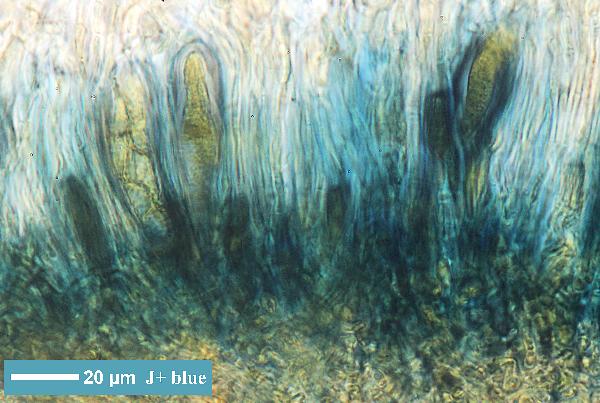

Felix Schumm - CC BY-SA 4.0
[19515], Far East of Russia, Zmeinyi creek valley, the Kunashir Island;
broad leaved forest; on bark of Ulmus laciniata Trantv.; 44°0'27.66'' N,
145°40'57.30'' E, 39 m. Leg. A. Ezhkin, 31.07.2013
(488/Ku62/P2/09.2016), det. A. Ezhkin.
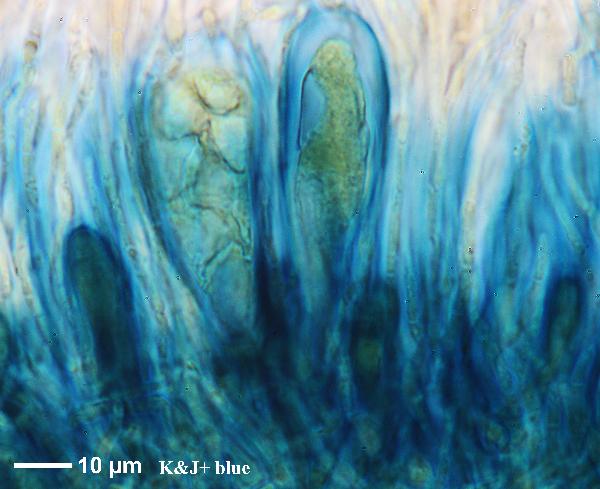

Felix Schumm - CC BY-SA 4.0
[19515], Far East of Russia, Zmeinyi creek valley, the Kunashir Island;
broad leaved forest; on bark of Ulmus laciniata Trantv.; 44°0'27.66'' N,
145°40'57.30'' E, 39 m. Leg. A. Ezhkin, 31.07.2013
(488/Ku62/P2/09.2016), det. A. Ezhkin.
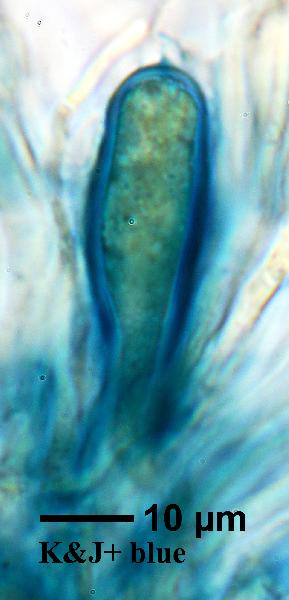

Felix Schumm - CC BY-SA 4.0
[19515], Far East of Russia, Zmeinyi creek valley, the Kunashir Island;
broad leaved forest; on bark of Ulmus laciniata Trantv.; 44°0'27.66'' N,
145°40'57.30'' E, 39 m. Leg. A. Ezhkin, 31.07.2013
(488/Ku62/P2/09.2016), det. A. Ezhkin.
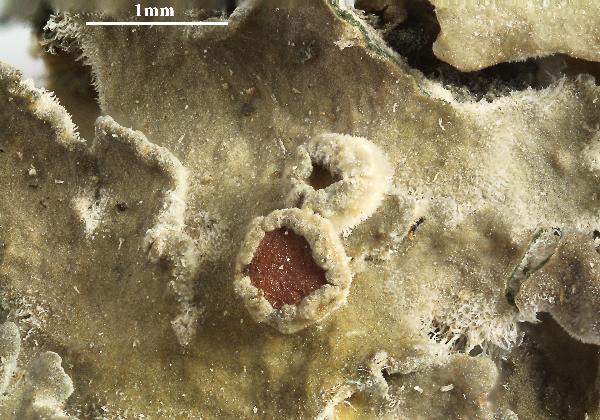

Felix Schumm - CC BY-SA 4.0
[19518], Far East of Russia, Tretyakova village suburbs, the Kunashir
island; mixed coniferous broad leaved forest; on bark of Ulmus laciniata
Trantv.; 43°58'28.38'' N, 145°39'49.28'' E, 163 m. Leg. A. Ezhkin,
22.06.2014 (487/Ku295/P1/09.2016), det. A. Ezhkin.
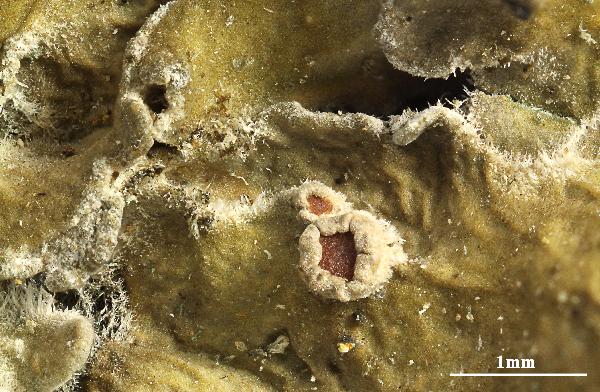

Felix Schumm - CC BY-SA 4.0
[19518], Far East of Russia, Tretyakova village suburbs, the Kunashir
island; mixed coniferous broad leaved forest; on bark of Ulmus laciniata
Trantv.; 43°58'28.38'' N, 145°39'49.28'' E, 163 m. Leg. A. Ezhkin,
22.06.2014 (487/Ku295/P1/09.2016), det. A. Ezhkin.


Felix Schumm - CC BY-SA 4.0
[19518], Far East of Russia, Tretyakova village suburbs, the Kunashir
island; mixed coniferous broad leaved forest; on bark of Ulmus laciniata
Trantv.; 43°58'28.38'' N, 145°39'49.28'' E, 163 m. Leg. A. Ezhkin,
22.06.2014 (487/Ku295/P1/09.2016), det. A. Ezhkin.
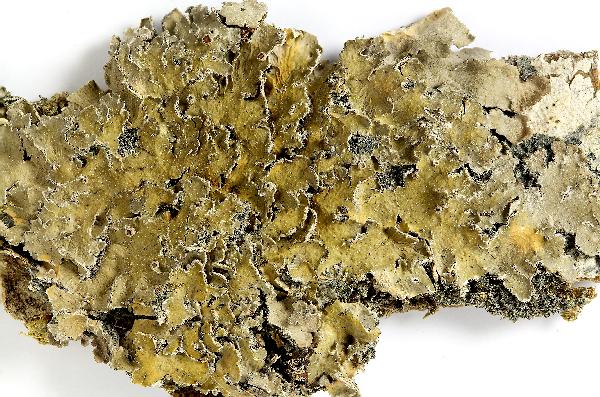

Felix Schumm - CC BY-SA 4.0
[19518], Far East of Russia, Tretyakova village suburbs, the Kunashir
island; mixed coniferous broad leaved forest; on bark of Ulmus laciniata
Trantv.; 43°58'28.38'' N, 145°39'49.28'' E, 163 m. Leg. A. Ezhkin,
22.06.2014 (487/Ku295/P1/09.2016), det. A. Ezhkin.


Felix Schumm - CC BY-SA 4.0
[19518], Far East of Russia, Tretyakova village suburbs, the Kunashir
island; mixed coniferous broad leaved forest; on bark of Ulmus laciniata
Trantv.; 43°58'28.38'' N, 145°39'49.28'' E, 163 m. Leg. A. Ezhkin,
22.06.2014 (487/Ku295/P1/09.2016), det. A. Ezhkin.
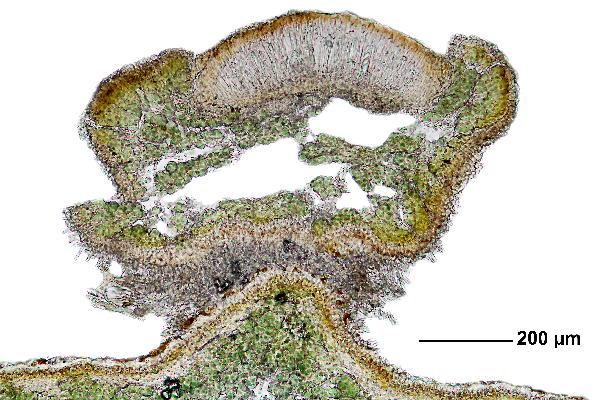

Felix Schumm - CC BY-SA 4.0
[19518], Far East of Russia, Tretyakova village suburbs, the Kunashir
island; mixed coniferous broad leaved forest; on bark of Ulmus laciniata
Trantv.; 43°58'28.38'' N, 145°39'49.28'' E, 163 m. Leg. A. Ezhkin,
22.06.2014 (487/Ku295/P1/09.2016), det. A. Ezhkin.
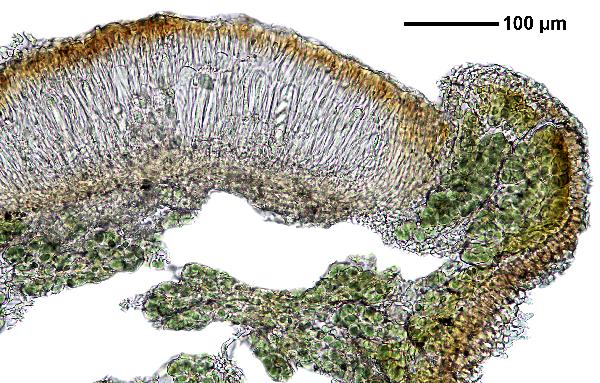

Felix Schumm - CC BY-SA 4.0
[19518], Far East of Russia, Tretyakova village suburbs, the Kunashir
island; mixed coniferous broad leaved forest; on bark of Ulmus laciniata
Trantv.; 43°58'28.38'' N, 145°39'49.28'' E, 163 m. Leg. A. Ezhkin,
22.06.2014 (487/Ku295/P1/09.2016), det. A. Ezhkin.
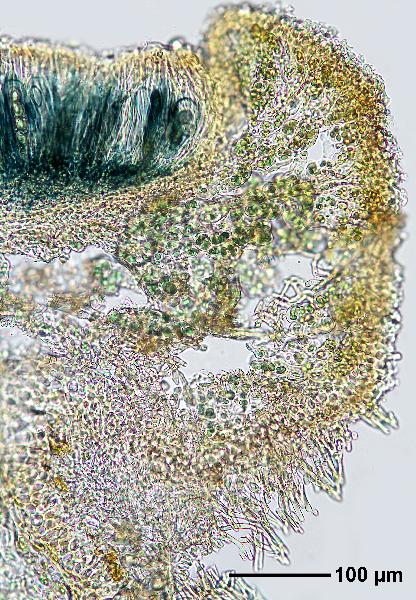

Felix Schumm - CC BY-SA 4.0
[19518], Far East of Russia, Tretyakova village suburbs, the Kunashir
island; mixed coniferous broad leaved forest; on bark of Ulmus laciniata
Trantv.; 43°58'28.38'' N, 145°39'49.28'' E, 163 m. Leg. A. Ezhkin,
22.06.2014 (487/Ku295/P1/09.2016), det. A. Ezhkin.
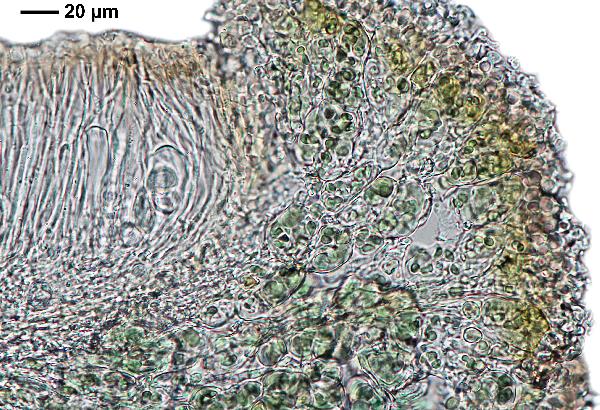

Felix Schumm - CC BY-SA 4.0
[19518], Far East of Russia, Tretyakova village suburbs, the Kunashir
island; mixed coniferous broad leaved forest; on bark of Ulmus laciniata
Trantv.; 43°58'28.38'' N, 145°39'49.28'' E, 163 m. Leg. A. Ezhkin,
22.06.2014 (487/Ku295/P1/09.2016), det. A. Ezhkin.
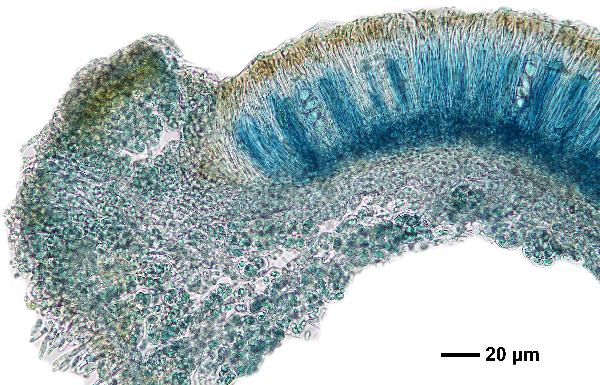

Felix Schumm - CC BY-SA 4.0
[19518], Far East of Russia, Tretyakova village suburbs, the Kunashir
island; mixed coniferous broad leaved forest; on bark of Ulmus laciniata
Trantv.; 43°58'28.38'' N, 145°39'49.28'' E, 163 m. Leg. A. Ezhkin,
22.06.2014 (487/Ku295/P1/09.2016), det. A. Ezhkin.


Felix Schumm - CC BY-SA 4.0
[19518], Far East of Russia, Tretyakova village suburbs, the Kunashir
island; mixed coniferous broad leaved forest; on bark of Ulmus laciniata
Trantv.; 43°58'28.38'' N, 145°39'49.28'' E, 163 m. Leg. A. Ezhkin,
22.06.2014 (487/Ku295/P1/09.2016), det. A. Ezhkin.
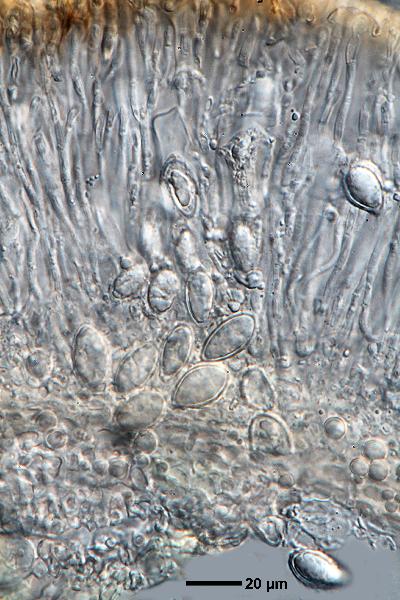

Felix Schumm - CC BY-SA 4.0
[19518], Far East of Russia, Tretyakova village suburbs, the Kunashir
island; mixed coniferous broad leaved forest; on bark of Ulmus laciniata
Trantv.; 43°58'28.38'' N, 145°39'49.28'' E, 163 m. Leg. A. Ezhkin,
22.06.2014 (487/Ku295/P1/09.2016), det. A. Ezhkin.
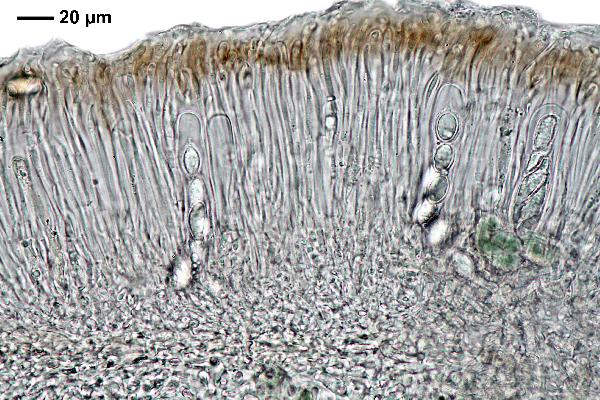

Felix Schumm - CC BY-SA 4.0
[19518], Far East of Russia, Tretyakova village suburbs, the Kunashir
island; mixed coniferous broad leaved forest; on bark of Ulmus laciniata
Trantv.; 43°58'28.38'' N, 145°39'49.28'' E, 163 m. Leg. A. Ezhkin,
22.06.2014 (487/Ku295/P1/09.2016), det. A. Ezhkin.
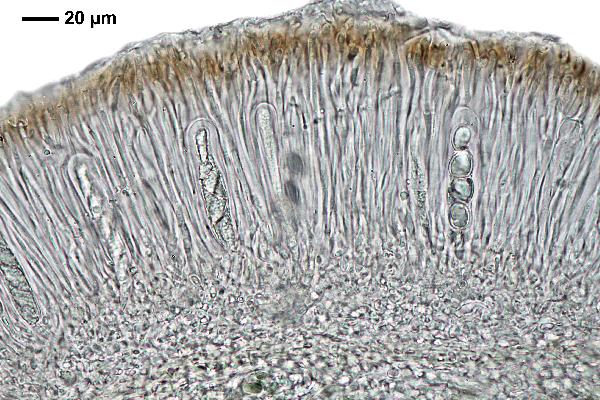

Felix Schumm - CC BY-SA 4.0
[19518], Far East of Russia, Tretyakova village suburbs, the Kunashir
island; mixed coniferous broad leaved forest; on bark of Ulmus laciniata
Trantv.; 43°58'28.38'' N, 145°39'49.28'' E, 163 m. Leg. A. Ezhkin,
22.06.2014 (487/Ku295/P1/09.2016), det. A. Ezhkin.
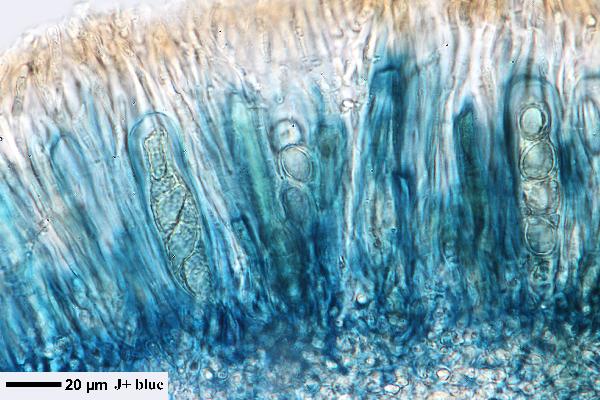

Felix Schumm - CC BY-SA 4.0
[19518], Far East of Russia, Tretyakova village suburbs, the Kunashir
island; mixed coniferous broad leaved forest; on bark of Ulmus laciniata
Trantv.; 43°58'28.38'' N, 145°39'49.28'' E, 163 m. Leg. A. Ezhkin,
22.06.2014 (487/Ku295/P1/09.2016), det. A. Ezhkin.
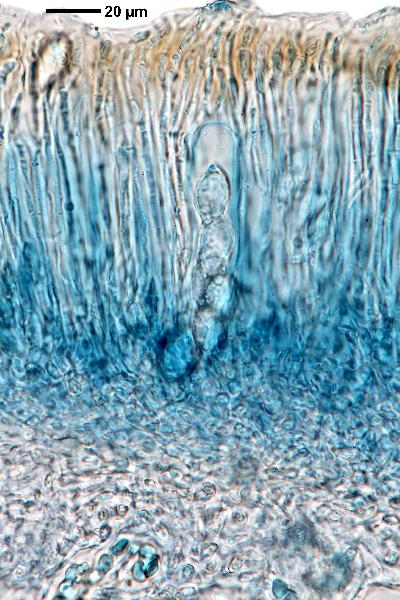

Felix Schumm - CC BY-SA 4.0
[19518], Far East of Russia, Tretyakova village suburbs, the Kunashir
island; mixed coniferous broad leaved forest; on bark of Ulmus laciniata
Trantv.; 43°58'28.38'' N, 145°39'49.28'' E, 163 m. Leg. A. Ezhkin,
22.06.2014 (487/Ku295/P1/09.2016), det. A. Ezhkin.
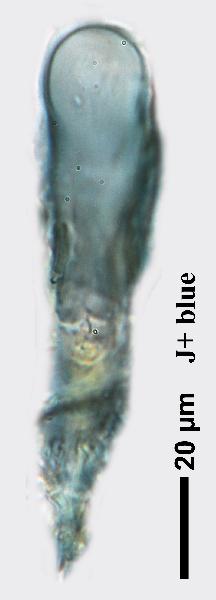

Felix Schumm - CC BY-SA 4.0
[19518], Far East of Russia, Tretyakova village suburbs, the Kunashir
island; mixed coniferous broad leaved forest; on bark of Ulmus laciniata
Trantv.; 43°58'28.38'' N, 145°39'49.28'' E, 163 m. Leg. A. Ezhkin,
22.06.2014 (487/Ku295/P1/09.2016), det. A. Ezhkin.
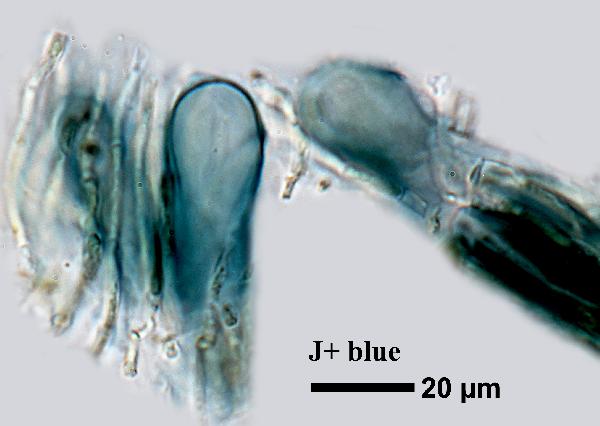

Felix Schumm - CC BY-SA 4.0
[19518], Far East of Russia, Tretyakova village suburbs, the Kunashir
island; mixed coniferous broad leaved forest; on bark of Ulmus laciniata
Trantv.; 43°58'28.38'' N, 145°39'49.28'' E, 163 m. Leg. A. Ezhkin,
22.06.2014 (487/Ku295/P1/09.2016), det. A. Ezhkin.
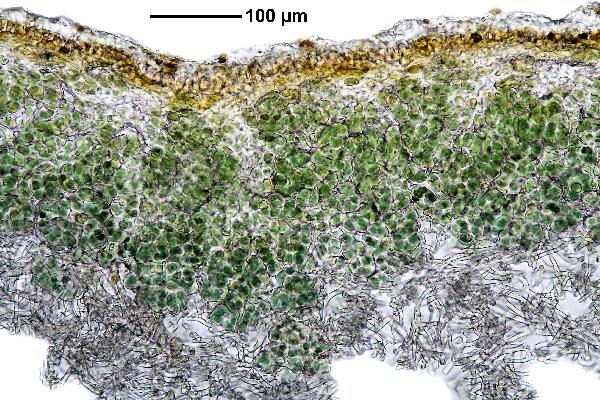

Felix Schumm - CC BY-SA 4.0
[19518], Far East of Russia, Tretyakova village suburbs, the Kunashir
island; mixed coniferous broad leaved forest; on bark of Ulmus laciniata
Trantv.; 43°58'28.38'' N, 145°39'49.28'' E, 163 m. Leg. A. Ezhkin,
22.06.2014 (487/Ku295/P1/09.2016), det. A. Ezhkin.
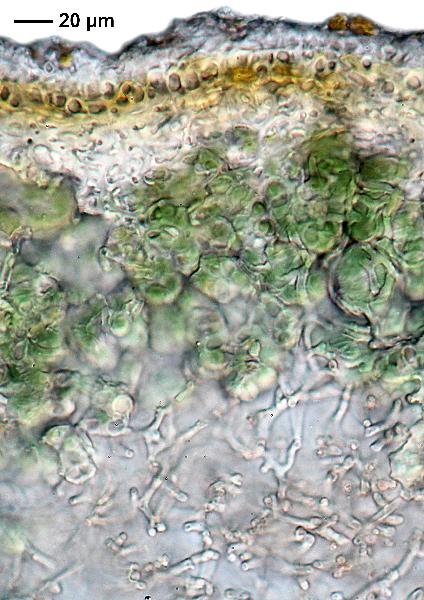

Felix Schumm - CC BY-SA 4.0
[19518], Far East of Russia, Tretyakova village suburbs, the Kunashir
island; mixed coniferous broad leaved forest; on bark of Ulmus laciniata
Trantv.; 43°58'28.38'' N, 145°39'49.28'' E, 163 m. Leg. A. Ezhkin,
22.06.2014 (487/Ku295/P1/09.2016), det. A. Ezhkin.
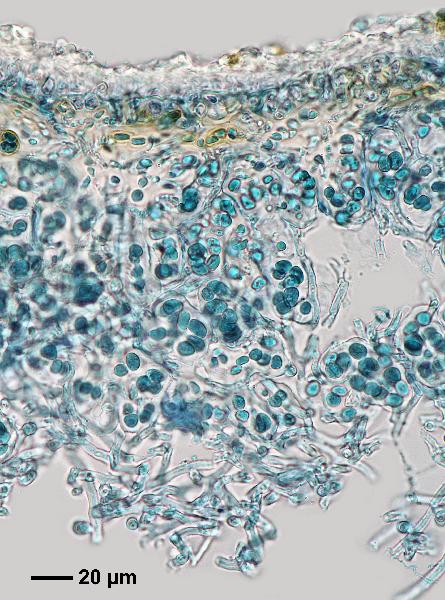

Felix Schumm - CC BY-SA 4.0
[19518], Far East of Russia, Tretyakova village suburbs, the Kunashir
island; mixed coniferous broad leaved forest; on bark of Ulmus laciniata
Trantv.; 43°58'28.38'' N, 145°39'49.28'' E, 163 m. Leg. A. Ezhkin,
22.06.2014 (487/Ku295/P1/09.2016), det. A. Ezhkin.


Felix Schumm - CC BY-SA 4.0
[19518], Far East of Russia, Tretyakova village suburbs, the Kunashir
island; mixed coniferous broad leaved forest; on bark of Ulmus laciniata
Trantv.; 43°58'28.38'' N, 145°39'49.28'' E, 163 m. Leg. A. Ezhkin,
22.06.2014 (487/Ku295/P1/09.2016), det. A. Ezhkin.


Felix Schumm - CC BY-SA 4.0
[19518], Far East of Russia, Tretyakova village suburbs, the Kunashir
island; mixed coniferous broad leaved forest; on bark of Ulmus laciniata
Trantv.; 43°58'28.38'' N, 145°39'49.28'' E, 163 m. Leg. A. Ezhkin,
22.06.2014 (487/Ku295/P1/09.2016), det. A. Ezhkin.
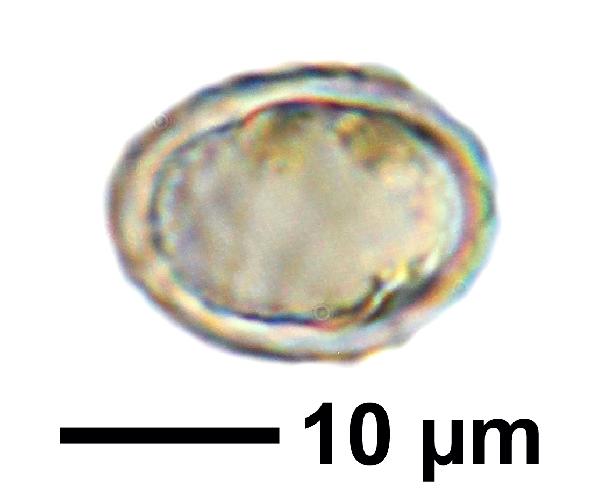

Felix Schumm - CC BY-SA 4.0
[19518], Far East of Russia, Tretyakova village suburbs, the Kunashir
island; mixed coniferous broad leaved forest; on bark of Ulmus laciniata
Trantv.; 43°58'28.38'' N, 145°39'49.28'' E, 163 m. Leg. A. Ezhkin,
22.06.2014 (487/Ku295/P1/09.2016), det. A. Ezhkin.
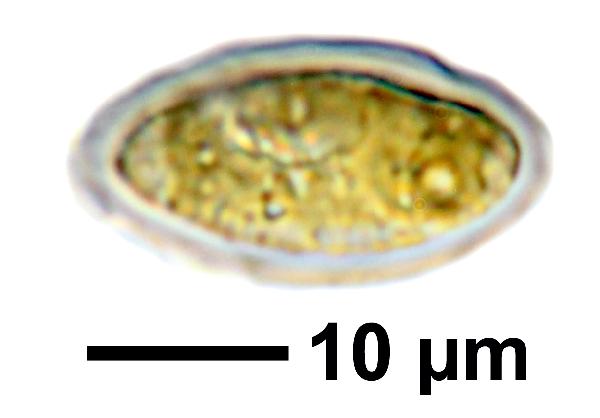

Felix Schumm - CC BY-SA 4.0
[19518], Far East of Russia, Tretyakova village suburbs, the Kunashir
island; mixed coniferous broad leaved forest; on bark of Ulmus laciniata
Trantv.; 43°58'28.38'' N, 145°39'49.28'' E, 163 m. Leg. A. Ezhkin,
22.06.2014 (487/Ku295/P1/09.2016), det. A. Ezhkin.
Growth form: Foliose, narrow lobed
Substrata: bark
Photobiont: cyanobacteria, filamentous (e.g. Nostoc, Scytonema)
Reproductive strategy: mainly sexual
Most common in areas with a humid-warm climate (e.g. most of Tyrrenian Italy)
Commonnes-rarity: (info)
Alpine belt: absent
Subalpine belt: absent
Oromediterranean belt: absent
Montane belt: extremely rare
Submediterranean belt: absent
Padanian area: absent
Humid submediterranean belt: extremely rare
Humid mediterranean belt: extremely rare
Dry mediterranean belt: absent

Predictive model
| Herbarium samples |


Felix Schumm – CC BY-SA 4.0
Image from: F. Schumm (2008) - Flechten Madeiras, der Kanaren und Azoren. Beck, OHG - ISBN: 978-3-00-023700-3


P.L. Nimis; Owner: Department of Life Sciences, University of Trieste
Herbarium: TSB (14361)
2001/12/10


P.L. Nimis; Owner: Department of Life Sciences, University of Trieste
Herbarium: TSB (2542)
2001/11/28
detail of soredia


Andrea Moro; Owner: Department of Life Sciences, University of Trieste
Italia, Friuli-Venezia Giulia, UD, Comune di Sauris, Bosco della Stua presso il Lago
2008.26.08


Andrea Moro; Owner: Department of Life Sciences, University of Trieste
Italia, Friuli-Venezia Giulia, UD, Comune di Sauris, Bosco della Stua presso il Lago
2008.26.08


Andrea Moro; Owner: Department of Life Sciences, University of Trieste
Italia, Friuli-Venezia Giulia, UD, Comune di Sauris, Bosco della Stua presso il Lago
2008.26.08

Bernard Bouffinier - Source: http://www.lichensmaritimes.org/index.php?task=fiche&lichen=367&lang=en
France, Trégarvan

Bernard Bouffinier - Source: http://www.lichensmaritimes.org/index.php?task=fiche&lichen=367&lang=en
France, Trégarvan

Bernard Bouffinier - Source: http://www.lichensmaritimes.org/index.php?task=fiche&lichen=367&lang=en
France, Forêt du Cranou

Bernard Bouffinier - Source: http://www.lichensmaritimes.org/index.php?task=fiche&lichen=367&lang=en
France, Forêt du Cranou

Bernard Bouffinier - Source: http://www.lichensmaritimes.org/index.php?task=fiche&lichen=367&lang=en
France, Forêt du Cranou

Bernard Bouffinier - Source: http://www.lichensmaritimes.org/index.php?task=fiche&lichen=367&lang=en
France, Dineault

Bernard Bouffinier - Source: http://www.lichensmaritimes.org/index.php?task=fiche&lichen=367&lang=en
France, Dineault

Bernard Bouffinier - Source: http://www.lichensmaritimes.org/index.php?task=fiche&lichen=367&lang=en
France, Dineault

Bernard Bouffinier - Source: http://www.lichensmaritimes.org/index.php?task=fiche&lichen=367&lang=en
France, St. Herbot

Bernard Bouffinier - Source: http://www.lichensmaritimes.org/index.php?task=fiche&lichen=367&lang=en
France, St. Herbot

Michel David - Source: http://www.lichensmaritimes.org/index.php?task=fiche&lichen=367&lang=en
France, Forêt du Cranou


Felix Schumm - CC BY-SA 4.0
[19515], Far East of Russia, Zmeinyi creek valley, the Kunashir Island; broad leaved forest; on bark of Ulmus laciniata Trantv.; 44°0'27.66'' N, 145°40'57.30'' E, 39 m. Leg. A. Ezhkin, 31.07.2013 (488/Ku62/P2/09.2016), det. A. Ezhkin.


Felix Schumm - CC BY-SA 4.0
[19515], Far East of Russia, Zmeinyi creek valley, the Kunashir Island; broad leaved forest; on bark of Ulmus laciniata Trantv.; 44°0'27.66'' N, 145°40'57.30'' E, 39 m. Leg. A. Ezhkin, 31.07.2013 (488/Ku62/P2/09.2016), det. A. Ezhkin.


Felix Schumm - CC BY-SA 4.0
[19515], Far East of Russia, Zmeinyi creek valley, the Kunashir Island; broad leaved forest; on bark of Ulmus laciniata Trantv.; 44°0'27.66'' N, 145°40'57.30'' E, 39 m. Leg. A. Ezhkin, 31.07.2013 (488/Ku62/P2/09.2016), det. A. Ezhkin.


Felix Schumm - CC BY-SA 4.0
[19515], Far East of Russia, Zmeinyi creek valley, the Kunashir Island; broad leaved forest; on bark of Ulmus laciniata Trantv.; 44°0'27.66'' N, 145°40'57.30'' E, 39 m. Leg. A. Ezhkin, 31.07.2013 (488/Ku62/P2/09.2016), det. A. Ezhkin.


Felix Schumm - CC BY-SA 4.0
[19515], Far East of Russia, Zmeinyi creek valley, the Kunashir Island; broad leaved forest; on bark of Ulmus laciniata Trantv.; 44°0'27.66'' N, 145°40'57.30'' E, 39 m. Leg. A. Ezhkin, 31.07.2013 (488/Ku62/P2/09.2016), det. A. Ezhkin.


Felix Schumm - CC BY-SA 4.0
[19515], Far East of Russia, Zmeinyi creek valley, the Kunashir Island; broad leaved forest; on bark of Ulmus laciniata Trantv.; 44°0'27.66'' N, 145°40'57.30'' E, 39 m. Leg. A. Ezhkin, 31.07.2013 (488/Ku62/P2/09.2016), det. A. Ezhkin.


Felix Schumm - CC BY-SA 4.0
[19515], Far East of Russia, Zmeinyi creek valley, the Kunashir Island; broad leaved forest; on bark of Ulmus laciniata Trantv.; 44°0'27.66'' N, 145°40'57.30'' E, 39 m. Leg. A. Ezhkin, 31.07.2013 (488/Ku62/P2/09.2016), det. A. Ezhkin.


Felix Schumm - CC BY-SA 4.0
[19515], Far East of Russia, Zmeinyi creek valley, the Kunashir Island; broad leaved forest; on bark of Ulmus laciniata Trantv.; 44°0'27.66'' N, 145°40'57.30'' E, 39 m. Leg. A. Ezhkin, 31.07.2013 (488/Ku62/P2/09.2016), det. A. Ezhkin.


Felix Schumm - CC BY-SA 4.0
[19515], Far East of Russia, Zmeinyi creek valley, the Kunashir Island; broad leaved forest; on bark of Ulmus laciniata Trantv.; 44°0'27.66'' N, 145°40'57.30'' E, 39 m. Leg. A. Ezhkin, 31.07.2013 (488/Ku62/P2/09.2016), det. A. Ezhkin.


Felix Schumm - CC BY-SA 4.0
[19515], Far East of Russia, Zmeinyi creek valley, the Kunashir Island; broad leaved forest; on bark of Ulmus laciniata Trantv.; 44°0'27.66'' N, 145°40'57.30'' E, 39 m. Leg. A. Ezhkin, 31.07.2013 (488/Ku62/P2/09.2016), det. A. Ezhkin.


Felix Schumm - CC BY-SA 4.0
[19515], Far East of Russia, Zmeinyi creek valley, the Kunashir Island; broad leaved forest; on bark of Ulmus laciniata Trantv.; 44°0'27.66'' N, 145°40'57.30'' E, 39 m. Leg. A. Ezhkin, 31.07.2013 (488/Ku62/P2/09.2016), det. A. Ezhkin.


Felix Schumm - CC BY-SA 4.0
[19515], Far East of Russia, Zmeinyi creek valley, the Kunashir Island; broad leaved forest; on bark of Ulmus laciniata Trantv.; 44°0'27.66'' N, 145°40'57.30'' E, 39 m. Leg. A. Ezhkin, 31.07.2013 (488/Ku62/P2/09.2016), det. A. Ezhkin.


Felix Schumm - CC BY-SA 4.0
[19518], Far East of Russia, Tretyakova village suburbs, the Kunashir island; mixed coniferous broad leaved forest; on bark of Ulmus laciniata Trantv.; 43°58'28.38'' N, 145°39'49.28'' E, 163 m. Leg. A. Ezhkin, 22.06.2014 (487/Ku295/P1/09.2016), det. A. Ezhkin.


Felix Schumm - CC BY-SA 4.0
[19518], Far East of Russia, Tretyakova village suburbs, the Kunashir island; mixed coniferous broad leaved forest; on bark of Ulmus laciniata Trantv.; 43°58'28.38'' N, 145°39'49.28'' E, 163 m. Leg. A. Ezhkin, 22.06.2014 (487/Ku295/P1/09.2016), det. A. Ezhkin.


Felix Schumm - CC BY-SA 4.0
[19518], Far East of Russia, Tretyakova village suburbs, the Kunashir island; mixed coniferous broad leaved forest; on bark of Ulmus laciniata Trantv.; 43°58'28.38'' N, 145°39'49.28'' E, 163 m. Leg. A. Ezhkin, 22.06.2014 (487/Ku295/P1/09.2016), det. A. Ezhkin.


Felix Schumm - CC BY-SA 4.0
[19518], Far East of Russia, Tretyakova village suburbs, the Kunashir island; mixed coniferous broad leaved forest; on bark of Ulmus laciniata Trantv.; 43°58'28.38'' N, 145°39'49.28'' E, 163 m. Leg. A. Ezhkin, 22.06.2014 (487/Ku295/P1/09.2016), det. A. Ezhkin.


Felix Schumm - CC BY-SA 4.0
[19518], Far East of Russia, Tretyakova village suburbs, the Kunashir island; mixed coniferous broad leaved forest; on bark of Ulmus laciniata Trantv.; 43°58'28.38'' N, 145°39'49.28'' E, 163 m. Leg. A. Ezhkin, 22.06.2014 (487/Ku295/P1/09.2016), det. A. Ezhkin.


Felix Schumm - CC BY-SA 4.0
[19518], Far East of Russia, Tretyakova village suburbs, the Kunashir island; mixed coniferous broad leaved forest; on bark of Ulmus laciniata Trantv.; 43°58'28.38'' N, 145°39'49.28'' E, 163 m. Leg. A. Ezhkin, 22.06.2014 (487/Ku295/P1/09.2016), det. A. Ezhkin.


Felix Schumm - CC BY-SA 4.0
[19518], Far East of Russia, Tretyakova village suburbs, the Kunashir island; mixed coniferous broad leaved forest; on bark of Ulmus laciniata Trantv.; 43°58'28.38'' N, 145°39'49.28'' E, 163 m. Leg. A. Ezhkin, 22.06.2014 (487/Ku295/P1/09.2016), det. A. Ezhkin.


Felix Schumm - CC BY-SA 4.0
[19518], Far East of Russia, Tretyakova village suburbs, the Kunashir island; mixed coniferous broad leaved forest; on bark of Ulmus laciniata Trantv.; 43°58'28.38'' N, 145°39'49.28'' E, 163 m. Leg. A. Ezhkin, 22.06.2014 (487/Ku295/P1/09.2016), det. A. Ezhkin.


Felix Schumm - CC BY-SA 4.0
[19518], Far East of Russia, Tretyakova village suburbs, the Kunashir island; mixed coniferous broad leaved forest; on bark of Ulmus laciniata Trantv.; 43°58'28.38'' N, 145°39'49.28'' E, 163 m. Leg. A. Ezhkin, 22.06.2014 (487/Ku295/P1/09.2016), det. A. Ezhkin.


Felix Schumm - CC BY-SA 4.0
[19518], Far East of Russia, Tretyakova village suburbs, the Kunashir island; mixed coniferous broad leaved forest; on bark of Ulmus laciniata Trantv.; 43°58'28.38'' N, 145°39'49.28'' E, 163 m. Leg. A. Ezhkin, 22.06.2014 (487/Ku295/P1/09.2016), det. A. Ezhkin.


Felix Schumm - CC BY-SA 4.0
[19518], Far East of Russia, Tretyakova village suburbs, the Kunashir island; mixed coniferous broad leaved forest; on bark of Ulmus laciniata Trantv.; 43°58'28.38'' N, 145°39'49.28'' E, 163 m. Leg. A. Ezhkin, 22.06.2014 (487/Ku295/P1/09.2016), det. A. Ezhkin.


Felix Schumm - CC BY-SA 4.0
[19518], Far East of Russia, Tretyakova village suburbs, the Kunashir island; mixed coniferous broad leaved forest; on bark of Ulmus laciniata Trantv.; 43°58'28.38'' N, 145°39'49.28'' E, 163 m. Leg. A. Ezhkin, 22.06.2014 (487/Ku295/P1/09.2016), det. A. Ezhkin.


Felix Schumm - CC BY-SA 4.0
[19518], Far East of Russia, Tretyakova village suburbs, the Kunashir island; mixed coniferous broad leaved forest; on bark of Ulmus laciniata Trantv.; 43°58'28.38'' N, 145°39'49.28'' E, 163 m. Leg. A. Ezhkin, 22.06.2014 (487/Ku295/P1/09.2016), det. A. Ezhkin.


Felix Schumm - CC BY-SA 4.0
[19518], Far East of Russia, Tretyakova village suburbs, the Kunashir island; mixed coniferous broad leaved forest; on bark of Ulmus laciniata Trantv.; 43°58'28.38'' N, 145°39'49.28'' E, 163 m. Leg. A. Ezhkin, 22.06.2014 (487/Ku295/P1/09.2016), det. A. Ezhkin.


Felix Schumm - CC BY-SA 4.0
[19518], Far East of Russia, Tretyakova village suburbs, the Kunashir island; mixed coniferous broad leaved forest; on bark of Ulmus laciniata Trantv.; 43°58'28.38'' N, 145°39'49.28'' E, 163 m. Leg. A. Ezhkin, 22.06.2014 (487/Ku295/P1/09.2016), det. A. Ezhkin.


Felix Schumm - CC BY-SA 4.0
[19518], Far East of Russia, Tretyakova village suburbs, the Kunashir island; mixed coniferous broad leaved forest; on bark of Ulmus laciniata Trantv.; 43°58'28.38'' N, 145°39'49.28'' E, 163 m. Leg. A. Ezhkin, 22.06.2014 (487/Ku295/P1/09.2016), det. A. Ezhkin.


Felix Schumm - CC BY-SA 4.0
[19518], Far East of Russia, Tretyakova village suburbs, the Kunashir island; mixed coniferous broad leaved forest; on bark of Ulmus laciniata Trantv.; 43°58'28.38'' N, 145°39'49.28'' E, 163 m. Leg. A. Ezhkin, 22.06.2014 (487/Ku295/P1/09.2016), det. A. Ezhkin.


Felix Schumm - CC BY-SA 4.0
[19518], Far East of Russia, Tretyakova village suburbs, the Kunashir island; mixed coniferous broad leaved forest; on bark of Ulmus laciniata Trantv.; 43°58'28.38'' N, 145°39'49.28'' E, 163 m. Leg. A. Ezhkin, 22.06.2014 (487/Ku295/P1/09.2016), det. A. Ezhkin.


Felix Schumm - CC BY-SA 4.0
[19518], Far East of Russia, Tretyakova village suburbs, the Kunashir island; mixed coniferous broad leaved forest; on bark of Ulmus laciniata Trantv.; 43°58'28.38'' N, 145°39'49.28'' E, 163 m. Leg. A. Ezhkin, 22.06.2014 (487/Ku295/P1/09.2016), det. A. Ezhkin.


Felix Schumm - CC BY-SA 4.0
[19518], Far East of Russia, Tretyakova village suburbs, the Kunashir island; mixed coniferous broad leaved forest; on bark of Ulmus laciniata Trantv.; 43°58'28.38'' N, 145°39'49.28'' E, 163 m. Leg. A. Ezhkin, 22.06.2014 (487/Ku295/P1/09.2016), det. A. Ezhkin.


Felix Schumm - CC BY-SA 4.0
[19518], Far East of Russia, Tretyakova village suburbs, the Kunashir island; mixed coniferous broad leaved forest; on bark of Ulmus laciniata Trantv.; 43°58'28.38'' N, 145°39'49.28'' E, 163 m. Leg. A. Ezhkin, 22.06.2014 (487/Ku295/P1/09.2016), det. A. Ezhkin.


Felix Schumm - CC BY-SA 4.0
[19518], Far East of Russia, Tretyakova village suburbs, the Kunashir island; mixed coniferous broad leaved forest; on bark of Ulmus laciniata Trantv.; 43°58'28.38'' N, 145°39'49.28'' E, 163 m. Leg. A. Ezhkin, 22.06.2014 (487/Ku295/P1/09.2016), det. A. Ezhkin.


Felix Schumm - CC BY-SA 4.0
[19518], Far East of Russia, Tretyakova village suburbs, the Kunashir island; mixed coniferous broad leaved forest; on bark of Ulmus laciniata Trantv.; 43°58'28.38'' N, 145°39'49.28'' E, 163 m. Leg. A. Ezhkin, 22.06.2014 (487/Ku295/P1/09.2016), det. A. Ezhkin.


Felix Schumm - CC BY-SA 4.0
[19518], Far East of Russia, Tretyakova village suburbs, the Kunashir island; mixed coniferous broad leaved forest; on bark of Ulmus laciniata Trantv.; 43°58'28.38'' N, 145°39'49.28'' E, 163 m. Leg. A. Ezhkin, 22.06.2014 (487/Ku295/P1/09.2016), det. A. Ezhkin.


 INDEX FUNGORUM
INDEX FUNGORUM
 GBIF
GBIF
 DOLICHENS
DOLICHENS
